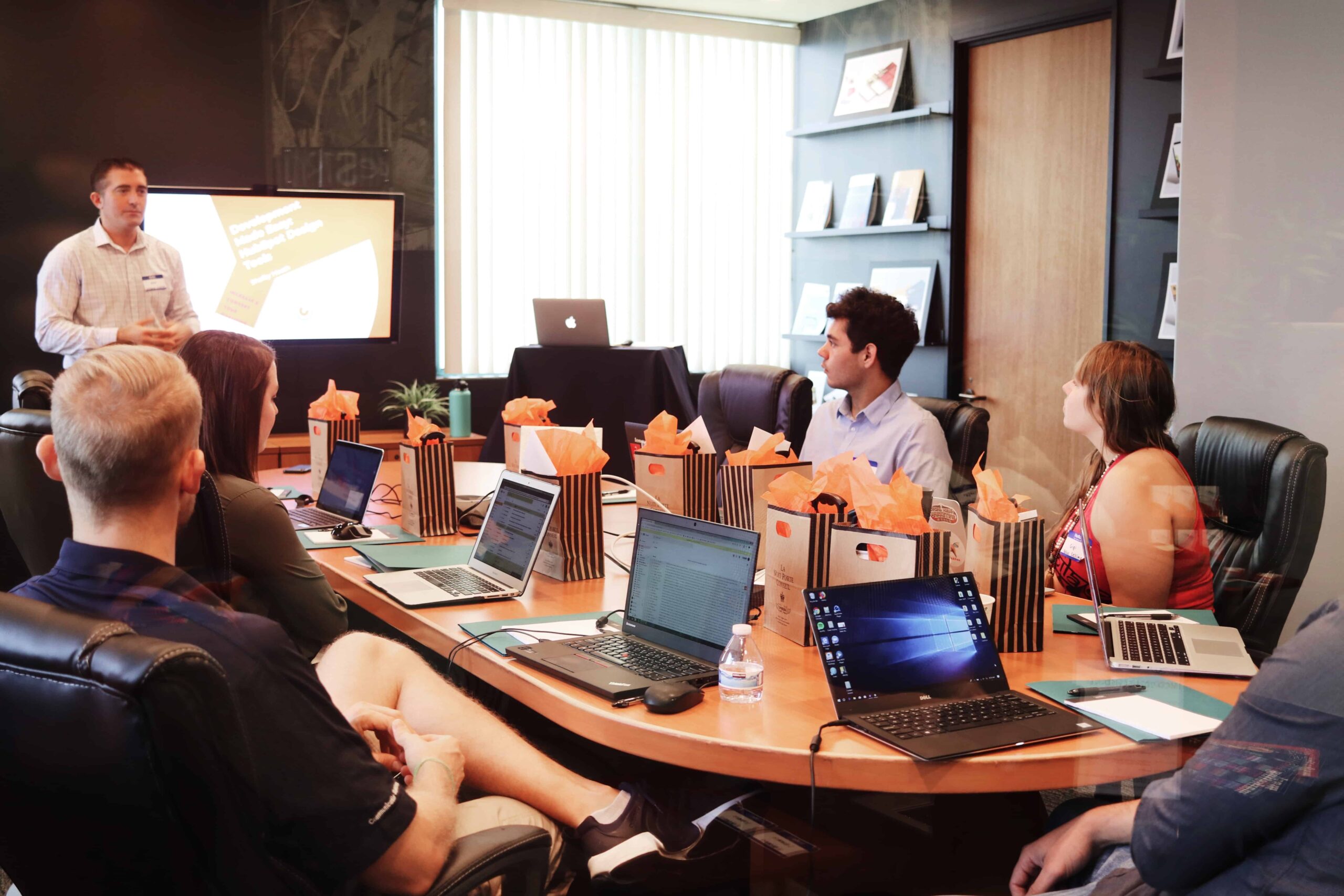An Essential Overview for Advanced Security Stacks for Small Businesses
In today’s rapidly evolving digital world, protecting business assets and data has become more important than ever. As we face an increasing volume of cyber threats, the concept of a security tech stack is gaining traction among IT professionals like IT Ninjas and business owners alike. A security tech stack refers to an integrated set of services and tools that work together to deliver comprehensive protection against cyberattacks.
Comprised of multiple layers, a security tech stack aims to identify, contain, respond, and stop malicious activity within an organization’s network. From Endpoint Detection and Response (EDR) and Managed Detection and Response (MDR) to Security Information and Event Management (SIEM), these layers work together to centralize threat visibility and provide cutting-edge threat intelligence.
Building an effective security tech stack requires a careful set of balancing acts. IT admins, cybersecurity professionals, and business owners face a complex task of selecting the right combination of productivity and cybersecurity tools to meet their organization’s unique security needs. Understanding the various components of a security tech stack and how they interrelate is essential for achieving maximum protection against a wide range of cyber threats.
Core Components of a Security Tech Stack
Firewalls and Network Security
One of the essential aspects of a security tech stack is the implementation of firewalls and network security measures. Firewalls help protect our internal network from unauthorized access and malicious activities. They monitor incoming and outgoing network traffic, enforcing security rules that keep sensitive data secure. Network security tools may also include intrusion detection systems (IDS) and intrusion prevention systems (IPS) to identify and stop threats.
Endpoint Protection
Endpoint protection is crucial for securing the devices that connect to our network, such as laptops, smartphones, and servers. We employ antivirus software, anti-malware tools, and other security solutions to prevent, detect, and remediate threats on these devices. Advanced endpoint protection may also utilize machine learning and behavioral analysis to identify and block known and emerging threats.
Identity and Access Management
Identity and access management (IAM) ensures that only authorized users can access our network and its resources. We establish secure authentication methods like multi-factor authentication (MFA) and single sign-on (SSO) to confirm users’ identities and reduce the risk of unauthorized access. IAM solutions also help control user permissions and roles, limiting access to data and applications based on the principle of least privilege.
Encryption and Data Protection
Protecting sensitive data is an integral part of our security tech stack. We use encryption technologies, such as Secure Sockets Layer (SSL) and Transport Layer Security (TLS), to safeguard data in transit between our network and other systems. Data at rest is also encrypted to prevent unauthorized access if storage devices are lost or stolen. Other data protection measures may include data loss prevention (DLP) tools and backup solutions to ensure data integrity and recoverability.
Security Information and Event Management (SIEM)
SIEM tools bring together data from across our security infrastructure, providing us with centralized visibility and analysis of security events and incidents. These tools collect and process log data from various sources, such as firewalls, IDS/IPS, and endpoint security solutions, enabling us to detect anomalies and potential threats in real-time. With the help of SIEM solutions, we can identify security incidents and respond more effectively, reducing the potential impact on our organization.
How to Choose a Security Tech Stack
Understand Your Business Needs
First, we need to evaluate our specific business needs and objectives. This means assessing our data and infrastructure protection requirements, considering industry-specific regulations, and understanding potential risks to our organization. By doing this, we can identify the key components of our security tech stack, such as SIEM tools, endpoint detection and response, or encryption mechanisms.
Evaluate Product Performance and Integration
Next, it’s important to evaluate the performance and integration capabilities of each solution in our security tech stack. We should look for solutions that are easy to deploy, have robust features, and can seamlessly integrate with other components of our tech stack. Additionally, ensure the chosen products have a good track record for detecting and mitigating threats. Testing and comparing solutions in a sandbox environment can help us make an informed decision.
Monitor and Manage Compliance
Compliance is crucial when building a security tech stack. We must be aware of the standards and regulations that apply to our industry and ensure that the tools we choose to incorporate into our security stack adhere to these requirements. Regular monitoring and management of compliance will help us avoid violations and maintain a strong security posture.
Consider Budget and Total Cost of Ownership
Lastly, financial considerations, such as budget and total cost of ownership, should be taken into account when selecting a security tech stack. We should be mindful of costs associated with implementing, integrating, and maintaining different security solutions. It’s important to strike a balance between sufficient protection and the overall cost of ownership. By prioritizing essential components and assessing their return on investment, we can build a robust and cost-effective security tech stack for our organization.
Maintaining and Updating Your Security Tech Stack
Regular Security Assessments
To ensure the effectiveness of our security tech stack, we perform regular security assessments. These assessments help us identify any vulnerabilities, gaps, or outdated components in our stack. By continuously evaluating our security posture, we can make informed decisions on necessary updates and improvements.
Patch and Update Management
Keeping our security tech stack updated is crucial to protect our organization from emerging threats. Patch and update management involves staying current with the latest software releases, security patches, and vulnerability fixes from vendors. By doing so, we can address potential risks and enhance the overall functionality of our tech stack.
- Maintain a comprehensive inventory of software components and their versions
- Monitor vendor announcements and patch releases
- Prioritize updates based on criticality and impact
- Test updates in a controlled environment before deploying them to production systems
Employee Training and Awareness
A key component of maintaining and updating our security tech stack involves employee training and awareness. Our employees play a critical role in keeping our organization secure, so it is essential that they possess the necessary knowledge and skills.
We invest in regular training sessions, covering various aspects such as:
- Phishing awareness: Educate employees on how to identify and report potential phishing attempts
- Password management: Emphasize the importance of strong, unique passwords and the use of password managers
- Safe browsing habits: Teach employees how to navigate the internet safely and avoid potentially harmful sites
- Data privacy guidelines: Ensure that employees understand their responsibilities in protecting sensitive information
By continuously maintaining and updating our security tech stack through regular assessments, patch management, and employee training, we can better protect our organization from potential threats and enhance our overall security posture.
Emerging Trends in Security Technology
Zero Trust Architecture
In recent years, the concept of Zero Trust Architecture has gained significant traction. This cybersecurity model operates under the principle of “never trust, always verify,” requiring verification of every user, device, and connection before granting access to any resource within an organization’s network. The shift toward embracing Zero Trust Architecture is driven by the need to adapt to ever-changing threats and the expanding digital footprints of modern organizations.
AI and Machine Learning in Cybersecurity
The convergence of AI and machine learning with cybersecurity technologies has created significant advancements in threat detection and response capabilities. By harnessing the power of AI and machine learning, security tools can sift through vast amounts of data to identify patterns and anomalies that suggest malicious activities. This enhances the efficiency of security operations centers (SOCs) and enables organizations to be more proactive in their defense against sophisticated cyberattacks.
Cloud Native Security
As organizations increasingly adapt to cloud-based solutions, there’s a growing need to evolve security measures accordingly. Cloud Native Security focuses on the protection of cloud environments and applications through a combination of container, microservices, and continuous integration/continuous deployment (CI/CD) pipeline technologies. Emphasizing the importance of secure that digital ecosystems, this approach aims to enhance visibility and control in cloud environments, making infrastructure more resilient to cyberthreats.
If you need help with an Advanced Security Stack for your Small Business in the Phoenix, AZ area contact IT Ninjas for a consultation.





